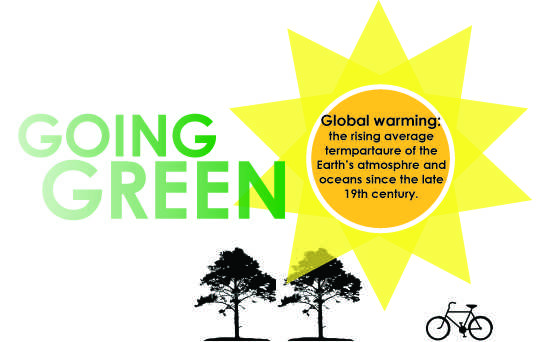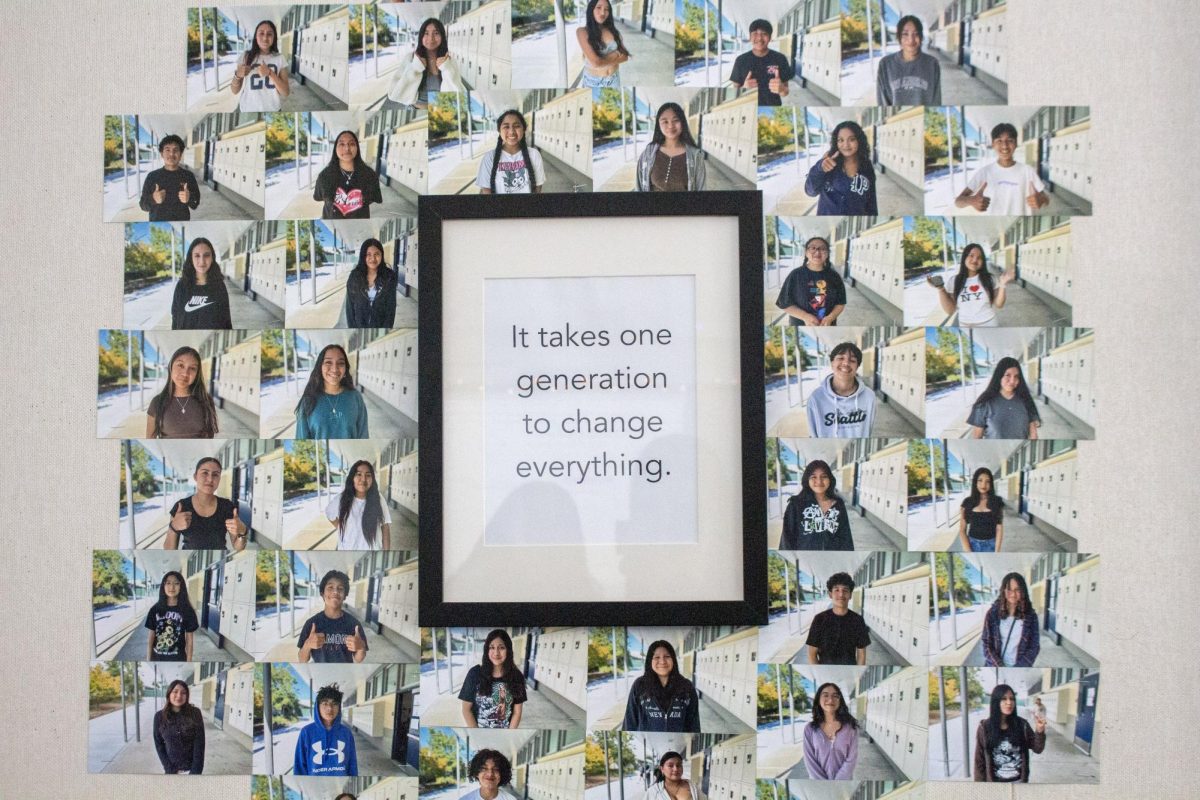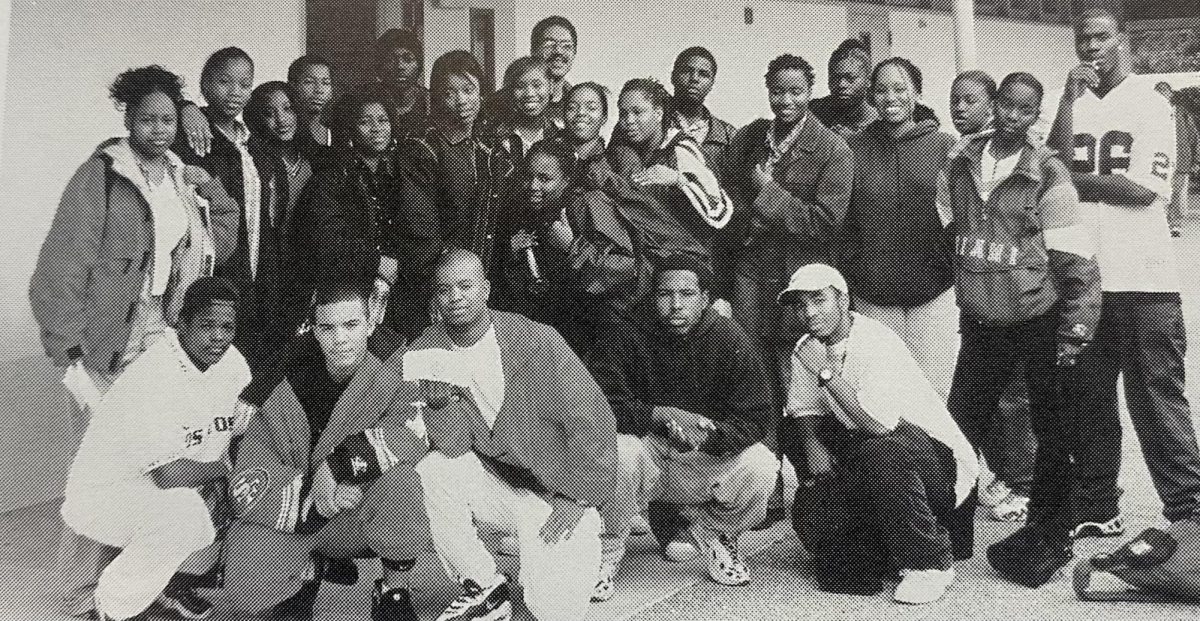One Step At a Time
A lavish green frond stretches lazily in the golden-filtered sunlight, as several perspiring plants hang suspended across a gaping drop. Below, a mass of brown roots dangles in a tantalizing web of open air and broken moisture.
An Amazon forest, you might wonder? A tropical Valhalla? A fleeting fantasy of sky-high leaves, floating branches and flying trees?
No, no and no.
These are junior Ido Simon’s 5-inch tall lettuce plants, which he is currently sustaining on a hydroponics system inside his home. The system allows Ido to grow plants without soil and is an elegant method for harvesting vegetables and flowers in an eco-friendly manner. Although he attends to his plants only once or twice a month, Ido’s garden maximizes nutrient efficiency by using less resources than a conventional garden.
Like so many other members of the school community, Ido has been trying to become more environmentally conscious at little cost to his day-to-day life. While some now bike to school, others are learning to conserve energy by turning off the light at home. While some teachers are shifting towards organic produce, others now make an effort to recycle in their free time.
“It’s all about the little steps,” Green Team member sophomore Maggie Kristian said.
Take Ido, for example. After attending a TED Talk about hydroponics systems made from recycled bottles in January, Ido created one of his own for a relatively inexpensive start-up cost from $50 to $100. His hydroponic system is the eco-farm of the future—already, vegetable farms across the world are switching over to hydroponics for the minimal energy costs and decreased runoff pollution.
And the amount of maintenance required? Almost none. Ido, who has been overseeing his deep-water culture since January, said that although he had spent an hour every day checking on his new creation the first week, in the past three months he has spent approximately 20 minutes changing the nutrients every two to four weeks.
“It is definitely possible to live more green without sacrificing a lot,” Ido said. “Even without hydroponics, many people have spare space in their backyards that they can plant a garden in for a weekend project. Hydroponics can help create a garden that produces year-round produce with minimal energy costs per month and less trips to the grocery store.”
Although it is possible to use hydroponics for commercial purposes as well, Ido does not plan to sell the plants he grows. Instead, he has given some homegrown basil to his friends and harvested one of his three lettuce plants for himself.
“I would definitely recommend it to others—I’ve not only learned a lot about the whole process of hydroponics, but also about plants and environmental sustainability,” Ido said. “Not only is it more cost-effective when everyone grows [with hydroponics], but it’s much healthier and pesticide free.”
Student groups have begun to not only increase their personal eco-friendliness, but also raise awareness about innovative ways to help the environment. Debut recently collaborated with Green Team to host a fashion show of recyclable clothes for Green Team’s annual Earth Week last Monday, April 23.
“We’re hoping to spur some creativity,” junior Janna Wang said. “Fashion can be incorporated into your life as an art and, while not everyone has to start making clothes out of recycled materials, we’re hoping to raise awareness [so] that you can give recycling a chance.”
With a minimum requirement of three outfits, members of Debut decided to salvage some old clothes and incorporate other recycled material into the new design.
For example, when Janna’s old sofa could not fit down the stairs during its removal, she simply took the leather off and incorporated leather strips into various side panels and pocket details in one of Debut’s outfits.
“Think twice before throwing it away or not wearing it because it’s not ‘in,’” Janna said. “It’s such a waste when guys go through growth spurts and leave behind clothes that are almost new. When you outgrow a pair of jeans, you can donate them or cut them into into shorts instead of throwing them away.”
Like Debut showed with their handcrafted outfits, there are ways to be green, innovative, and trendy at the same time. Through small and individual efforts, students and staff members can make significant environmental changes with minimal sacrifice.
“I think a lot of people get intimidated by the concept of changing their entire lifestyle, but in reality, it’s actually quite simple,” Maggie said.
“Just make smart choices, and think about the implications your actions have on the planet. You may seem small, but everything you do counts.”
And while it may seem unlikely that a simple flip of a one-inch light switch in Los Altos can affect North Arctic polar bears thousands of miles away, it is precisely these seemingly insignificant actions that eventually garner beneficial effects on the economy. Contrary to popular belief, you don’t need to install a solar panel, harvest a garden, or transform your entire home into a 100 percent self-sustainable green machine in order to aid the environment.
You just need to start with that light switch.
Eating Local
Sophomore Kevin Glass and his mother ‘s weekend trips to the local farmers market have been a regular habit for the past four months. The two navigate bustling streets, observing and sampling organic food sold by local vendors.
“I’m not 100 percent into organic foods and I don’t buy everything organic … but it’s one way that I can help,” Kevin said.
As a member of Green Team, Kevin maintains a strong understanding of the positive impacts that locally-purchased food have on the environment. For instance, carbon emissions are reduced when food is transported from a local farm as opposed to from large food companies. In addition, organic foods are healthier and less harmful to the environment because they aren’t treated with pesticide.
“It’s not quite like a pride but it’s a nice feeling thinking, ‘Man, this hasn’t been in a box for days’,” Kevin said.
Sophomore Zach Gospe is also strong proponent of supporting local, organic food industries. His family began purchasing organic foods over 10 years ago. But to Zach, purchasing local food and buying local is a way to send a message to the giant food companies whose products are detrimental to the environment.
“In essence, it’s boycotting those chemicals that we don’t want in our bodies or in other people’s bodies,” Zach said.
However, not everyone views buying local as a way to fight the repulsive policies of large supermarket companies. Freshman Roya Samani and her mother began eating locally grown food simply because the food is not genetically modified and has virtually no carbon footprint.
Roya’s actions prove that not all locally grown food has to be bought at a farmers market, but instead can come from personal gardens or self-raised animals. She and her family tend to a garden that consists of oranges, apples, tomatoes, eggplants, lettuce and many more fruits and vegetables. Zach’s family also raises three chickens that lay “completely organic and fresh” eggs.
However, students shouldn’t feel obligated to grow a garden or raise chickens in order to participate in the green food movement. There are multiple ways for them to get involved even if they are unwilling to completely adjust their lifestyles to be more environmentally friendly.
A Green Future
The Living Classroom, an organization founded in 2008, teaches lessons to students in grades K-8 at 9 schools in the Los Altos School District. The program’s lessons are entirely docent run and, according to Operations Manager Jessie Ruthruff, aim to “introduce students to how the natural world plays a part in their everyday lives”. They attempt to not only teach students life skills through working with nature, but also establish an appreciation for the natural world by encouraging environmental stewardship.
“Now that the science aids are gone due to funding cuts, the Living Classroom is providing students with the materials they need to connect topics from a book to real life,” Ruthruff said.
The Living Classroom’s lessons range from group collaboration and problem solving skills to environmental stewardship and water conservation. This year, the Living Classroom is bringing over 600 lessons to students in the district. In addition, each school that the Living Classroom teaches at has a garden so that students can have a more hands-on experience.
For instance, docents teach a lesson called “Sustainable Garden” to fourth-grade students. The lesson introduces students to water and soil conservation as well as the role that insects can play in nature as an alternative to pesticide control for gardening. It is just one part of a series of lessons focused on environmental stewardship, which includes other subjects such as composting.
“I believe that a lot of people would be more environmentally conscious if they had a better sense of what they were getting out of it,” Jessie said.
Even though the organization is hindered financially by being limited exclusively to docent funding, it continues to expand every year. As of now, the Living Classroom is collaborating with other districts that are likewise interested in creating similar programs for their students.
Above all, Jessie and others believe that it is important to introduce children to nature and the environment early on through hands-on lessons rather than through textbooks.
“Introducing students to the environment while they are still young helps foster the idea that nature is still a part of our everyday lives,” Jessie said.
However, the green focus in the classroom does not stop once students move to high school. After receiving a $50,000 grant this year from Google, the school’s science department is expanding its horizons in search of more creative ways to educate students about the environment. Many teachers have already used the pieces of the grant money for field trips and new equipment and are now planning to leverage the funds to increase the environmental focus in the science curriculum.
“One conversation we’ve had is adding a green component into our current curriculum,” science teacher Danielle Paige said. “[We would be] still teaching our biology curriculum, but from a sustainability point of view. [We would be] still teaching our chemistry curriculum, but from a green chemistry and sustainability point of view.”
The increased focus on green education in schools addresses the growing worldwide concern for conservation and sustainability.
“We are in a time where people are interested in bringing in new ideas,” Paige said.
So far, the school’s science department at the school has aimed to educate students about the importance of conservation by involving students through field trips and new labs. The Biology AP class has taken a trip to Ventura, California and a few classes have already invested in biotechnology kits, which allow students to actively interact with new green technology. The staff is now considering more active ways to incorporate environmental concerns into the core science curriculum.
“We are just starting to have conversations about some different [green] directions we can take as a science department,” Paige said.
Paige said that the most important factor for the department, however, will be ensuring that the curriculum is always current, interesting and relevant to students. According to biology teacher Meghan Schuff, the green classroom movement at the school is still in an “embryonic phase.” The most important focus for the department is currently making subject matter interesting and relevant to students.
“We are trying to think of more innovative ways to get students interested in science and get [students] prepared for working in a lab situation,” Shuff said.
How Easy is it?
When I was a little kid, my parents taught me to recycle properly and turn off the lights when leaving a room. I never really considered these insignificant actions to be helpful to the environment. I always thought you had to be an environmental activist who petitions for bills, or one who buys an expensive Prius or install solar panels. But for an average high school student like me, this wasn’t possible. I took it upon myself to look for simple, inexpensive ways to be more green.
To start, I began to walk to school and my other activities, since everything was close to my house. Surprisingly, I enjoyed walking from place to place and helping the environment as an added bonus. Although walking took more time than travelling by car, it made me feel more independent and gave me time to appreciate the beautiful environment around me. For instance, instead of seeing the same rusty stop sign at the end of the road each day, I was able to see the bright roses in my neighbor’s garden blossom.
As a result, I was inspired to use the plants in my backyard. Every spring, my orange tree begins to produce a plethora of sweet and delicious oranges, but my family tended to only pick a couple. So instead of leaving the rest of the oranges for the squirrels, I began to pack one in my lunch each day.
I felt the most “green” after visiting the farmers market on San Antonio. Here, the fruits and vegetables are organic and free of harmful pesticides and synthetic chemicals. I filled my small basket with fresh apples, strawberries and blueberries. In the end, it was a bit more expensive than produce from a regular store, but infinitely more worth it. What made me proudest, though, was that after leaving the farmers market, I didn’t walk a block to buy a Jamba Juice. Instead, I walked home and made a smoothie myself.
After two weeks, I reflected on the changes I made to my life to be more green. I hadn’t installed solar panels on my roof, nor did I petition my parents to invest in a Prius. To be truthful, there were even a few times when I was too lazy to pick an orange or walk to the farmers market. But what I realized was that I didn’t have to spend a lot of money or completely change my lifestyle to accomodate these new “green activities.” I just had to make small tweaks to what I was already doing. That surprised me the most. There wasn’t any inconvience and if anything, I was happier living my modified, green lifestyle than my previous one.








